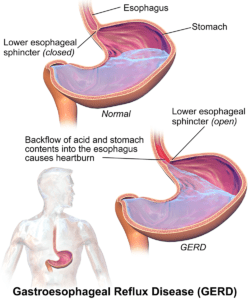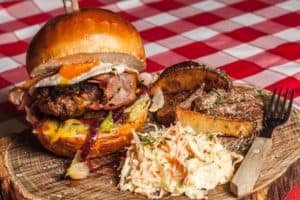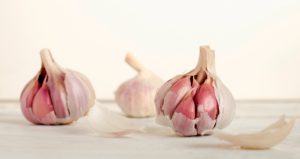
3 Powerful Ways to Improve Heartburn
After a full-sized meal, one of the most common complaints is heartburn. That infamous feeling of burning in the chest or throat. If you’ve experienced this unpleasant sensation, you are not alone. In fact, nearly everyone experiences heartburn. Today, I will be reviewing why we experience it and 3 ways to improve heartburn symptoms.
Find out 3 ways to improve #heartburn! Share on XWhat is Heartburn?
The National Library of Medicine defines heartburn as the painful burning feeling in the chest or throat. Heartburn occurs when stomach acid travels up from your stomach into your esophagus (the muscular tube connecting throat to stomach). Generally, when we eat, the Lower Esophageal Sphincter (LES) (a ring of muscle joining the esophagus and stomach) closes to keep the stomach acids from traveling upward. However, with heartburn, the LES relaxes allowing stomach contents to move upward into your esophagus and throat/chest. This leads to the burning and/or painful sensations.
3 Powerful Ways to Improve Heartburn
-
Monitor Meal Size
With heartburn, symptoms usually occur within 1 hour of eating – and it’s usually after the largest meal of the day. This is because when we eat large portions, our stomach stretches pushing on the lower esophageal sphincter (LES). This extra pressure can relax the LES allowing stomach contents to travel upward.
TIP: If you are prone to heartburn, monitor and consider reducing portions. You can also experiment with eating smaller meals to see if this helps with reducing symptoms.
Heartburn often occurs within 1 hour of our largest meal. Share on X-
Know Individual Triggers
People digest foods differently; this means that heartburn triggers are also highly individualized. Therefore, one person’s heartburn triggers may not be another’s. Some of my clients have symptoms after eating garlic or onions while others only have symptoms only after ingesting citrus foods. Being familiar with the most common triggers can help in discovering what your triggers may be.
Most common Heartburn Food Triggers:
- Fatty foods
- Alcohol
- Garlic and onions
- Spicy foods
- Tomatoes and citrus fruits
- Coffee, decaf coffee and teas
- Peppermint
- Chocolate
-
Track your Heartburn Symptoms
Now that you are aware why we experience heartburn and the most common dietary triggers, it is time to track your food intake. You can track your intake using the Dietetic Directions’ Food Symptom Diary. This is what I use with my IBS, Crohn’s, Colitis and heartburn clients. It allows you to track meal times, what was consumed, portions and of course corresponding symptoms. Working together with a registered dietitian can help in discovering your specific heartburn triggers and coming up with a strategy for managing symptoms. It is also important to note stress in the food symptom journal, since stress can relax the LES causing or worsening reflux.
FREE Food Symptom Diary here 2 track #heartburn symptoms & food intake! Share on XBottom Line:
If you experience heartburn, you are not alone. Be sure to track your symptoms and be aware of potential food and emotional triggers. If you have heartburn more than twice a week, you may have Gastroesophageal Reflux Disease (GERD) and it is recommended to also speak with your physician.
Ps. Check out my interview with Global News – Avoid these 7 foods if you have a problem with heart burn






